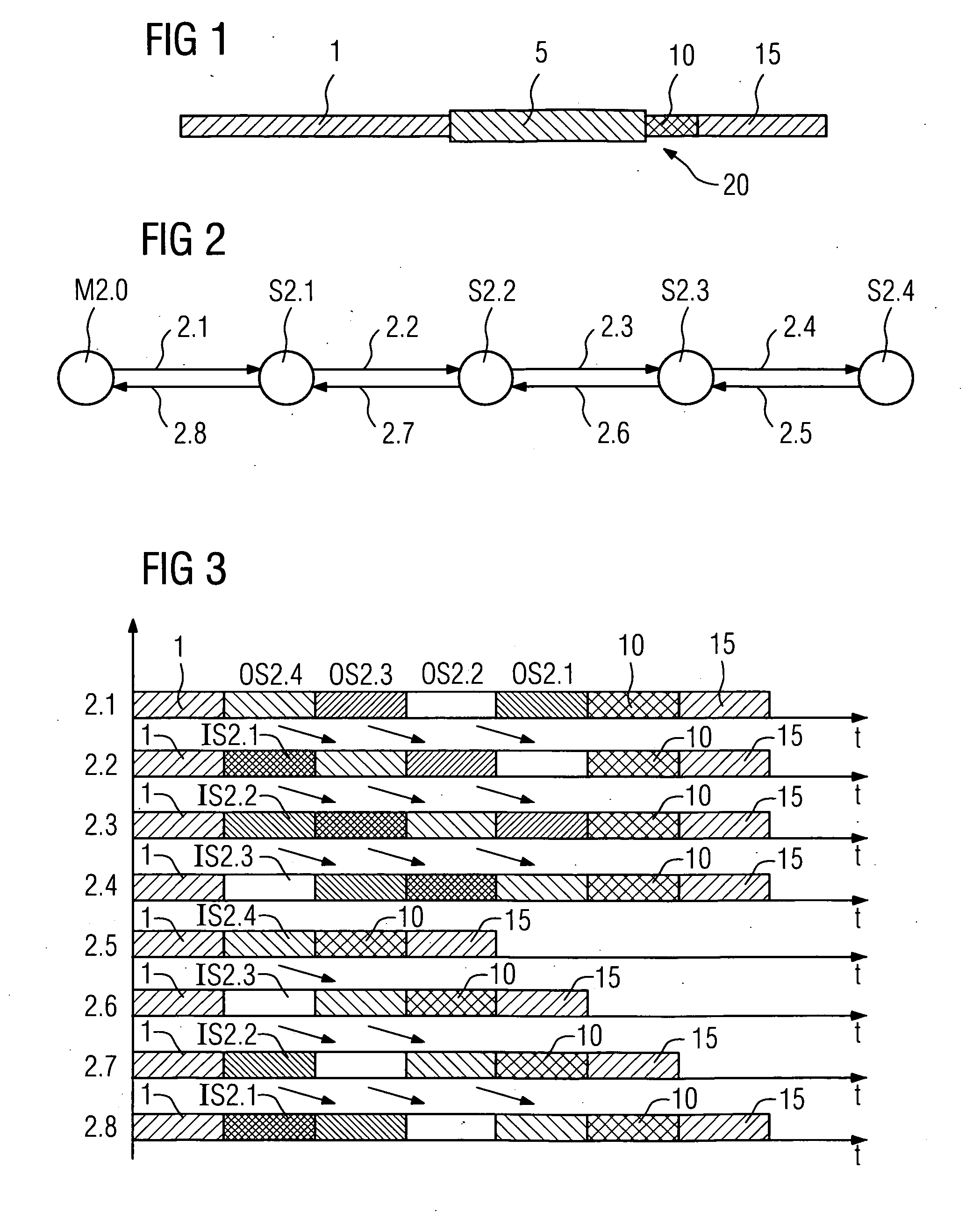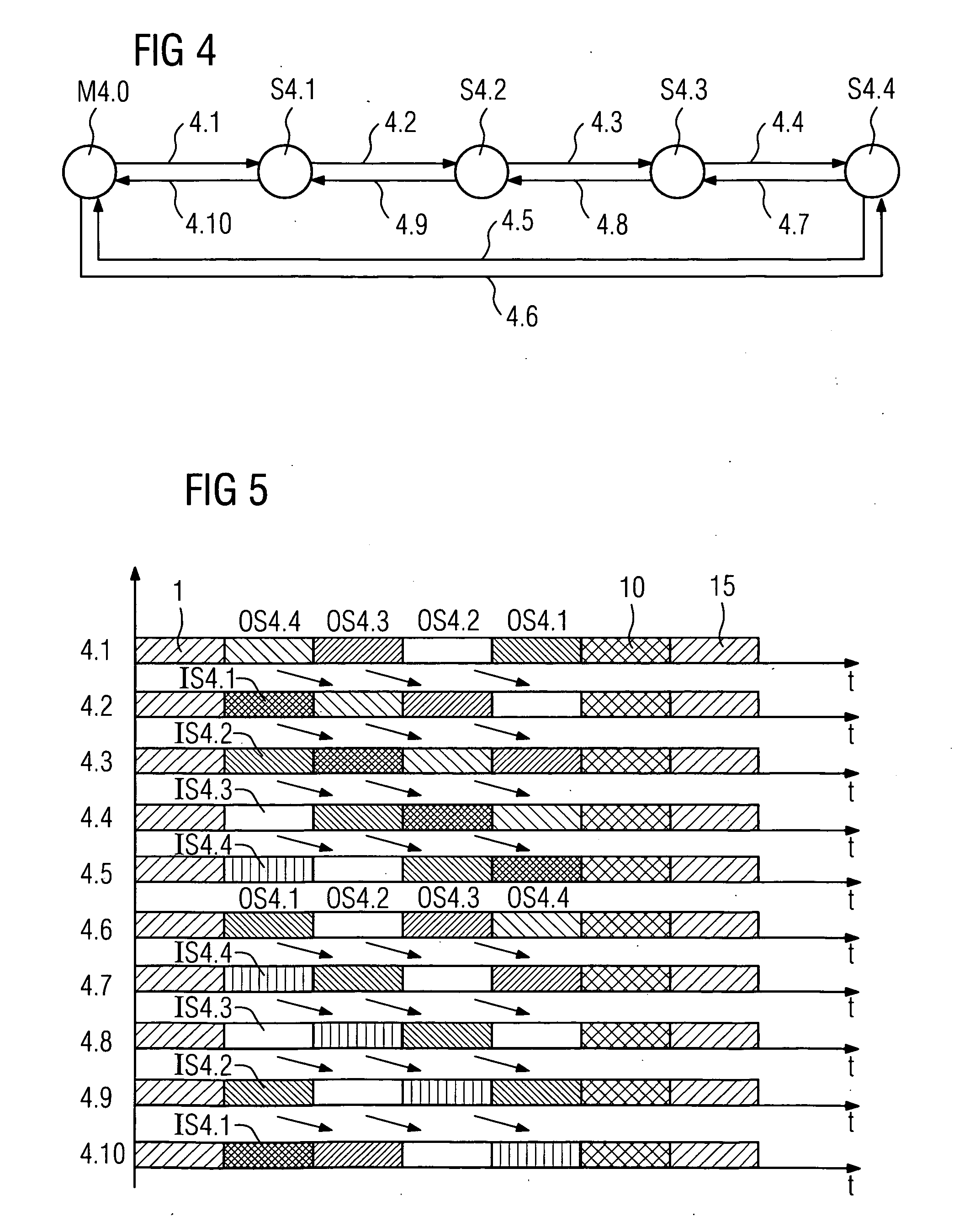Method for optimizing bandwidth utilization in bus systems
a bus system and bandwidth utilization technology, applied in data switching networks, digital transmission, multiplex communication, etc., can solve the problems of reducing affecting the effective data rate, and affecting the efficiency of the bus system, so as to improve the effective bandwidth utilization
- Summary
- Abstract
- Description
- Claims
- Application Information
AI Technical Summary
Benefits of technology
Problems solved by technology
Method used
Image
Examples
Embodiment Construction
[0034]FIG. 1 shows a time structure of a conventional Ethernet data telegram, as used by most Internet protocol-based networks. The first data segment is what is known as the header (HDR) 1, containing the Ethernet destination address as well as the Ethernet source address. This is followed by the data segment 5 of the useful data, which can contain 46 to 1500 bytes. Then follows a data segment 10, taking up a total of four bytes and containing what is known as the checksum (CRC). This checksum is created by the sending subscriber, by carrying out a CRC calculation over the entire bit sequence of the preceding data segments. This allows the recipient to verify the content of the CRC checksum using the same calculation. If the values do not correspond, the recipient assumes incorrect transmission and the frame is rejected. The fourth data segment 15 contains zeros and ones used for what is known as collision detection. The data segments 1, 10 and 15 are generally referred to as the o...
PUM
 Login to View More
Login to View More Abstract
Description
Claims
Application Information
 Login to View More
Login to View More - R&D
- Intellectual Property
- Life Sciences
- Materials
- Tech Scout
- Unparalleled Data Quality
- Higher Quality Content
- 60% Fewer Hallucinations
Browse by: Latest US Patents, China's latest patents, Technical Efficacy Thesaurus, Application Domain, Technology Topic, Popular Technical Reports.
© 2025 PatSnap. All rights reserved.Legal|Privacy policy|Modern Slavery Act Transparency Statement|Sitemap|About US| Contact US: help@patsnap.com



